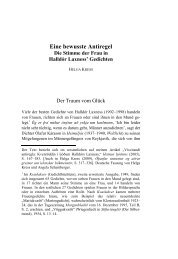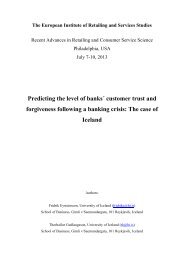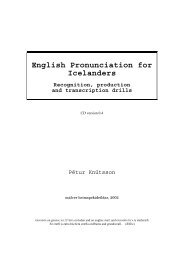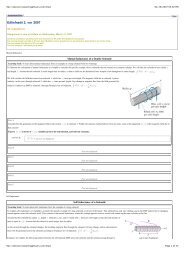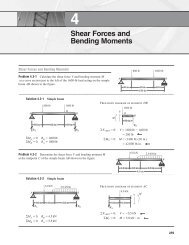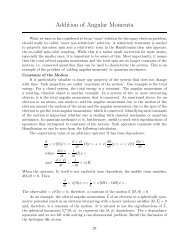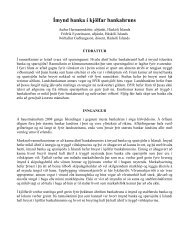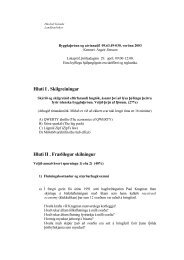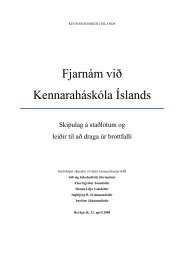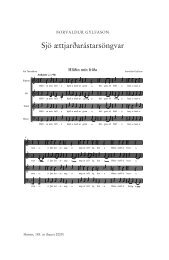The Hartree-Fock approximation underlies the most commonly used ...
The Hartree-Fock approximation underlies the most commonly used ...
The Hartree-Fock approximation underlies the most commonly used ...
You also want an ePaper? Increase the reach of your titles
YUMPU automatically turns print PDFs into web optimized ePapers that Google loves.
i.e. three gaussians are <strong>used</strong> in each orbital.<br />
Figure II.2 Representation of <strong>the</strong> 1s orbital of <strong>the</strong> hydrogen atom with a linear combination<br />
of three Gaussians.<br />
In a more flexible basis set called 6-31G, <strong>the</strong> core electrons are represented by a single<br />
Slater type orbital which is described by six Gaussians (contracted) while valence electrons<br />
are represented by two Slater type orbitals, one described by three Gaussians (contracted)<br />
and <strong>the</strong> o<strong>the</strong>r described by a single Gaussian. When an atom is placed in an external<br />
field, <strong>the</strong> electron cloud is distorted (polarized). To describe this, it is necessary to include<br />
also excited atomic orbitals, i.e. orbitals which are not occupied in <strong>the</strong> ground state. In<br />
<strong>the</strong> 6-31G ∗∗ basis set, excited atomic orbitals are included for all atoms (for example dorbital<br />
functions for O atoms), while in <strong>the</strong> 6-31G ∗ basis set, <strong>the</strong> excited atomic orbitals<br />
are included for all elements but H atoms. It turns out that H atoms are hard to polarize<br />
so it is often a good <strong>approximation</strong> to only include polarization of <strong>the</strong> heavier atoms.<br />
<strong>The</strong> main computational effort in doing a large SCF calculation lies in <strong>the</strong> evaluation<br />
of two-electron integrals. If <strong>the</strong>re are K basis functions <strong>the</strong>n <strong>the</strong>re will be on <strong>the</strong> order of<br />
K 4 two-electron integrals. This can be on <strong>the</strong> order of millions even for small basis sets<br />
and moderately large molecules. <strong>The</strong> accuracy and efficiency of <strong>the</strong> calculation depends<br />
very much on <strong>the</strong> choice of basis functions, just as any variational calculation depends<br />
strongly on <strong>the</strong> choice of trial functions.<br />
<strong>The</strong> results of an STO − 3G calculation for H2 using restricted <strong>Hartree</strong>- <strong>Fock</strong> is<br />
shown in <strong>the</strong> figure below <strong>The</strong> limit of large r is not reproduced correctly because H2 does<br />
not dissociate into two closed shell fragments. In restricted <strong>Hartree</strong>-<strong>Fock</strong> <strong>the</strong> dissociation<br />
44



